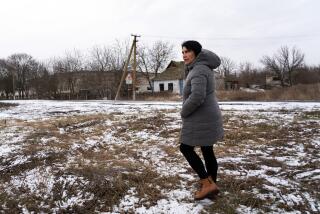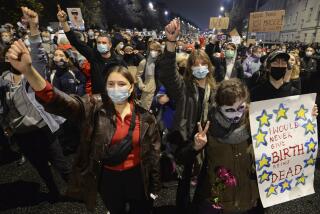As Eastern Europe shrinks, rural Bulgaria is becoming a ghostland
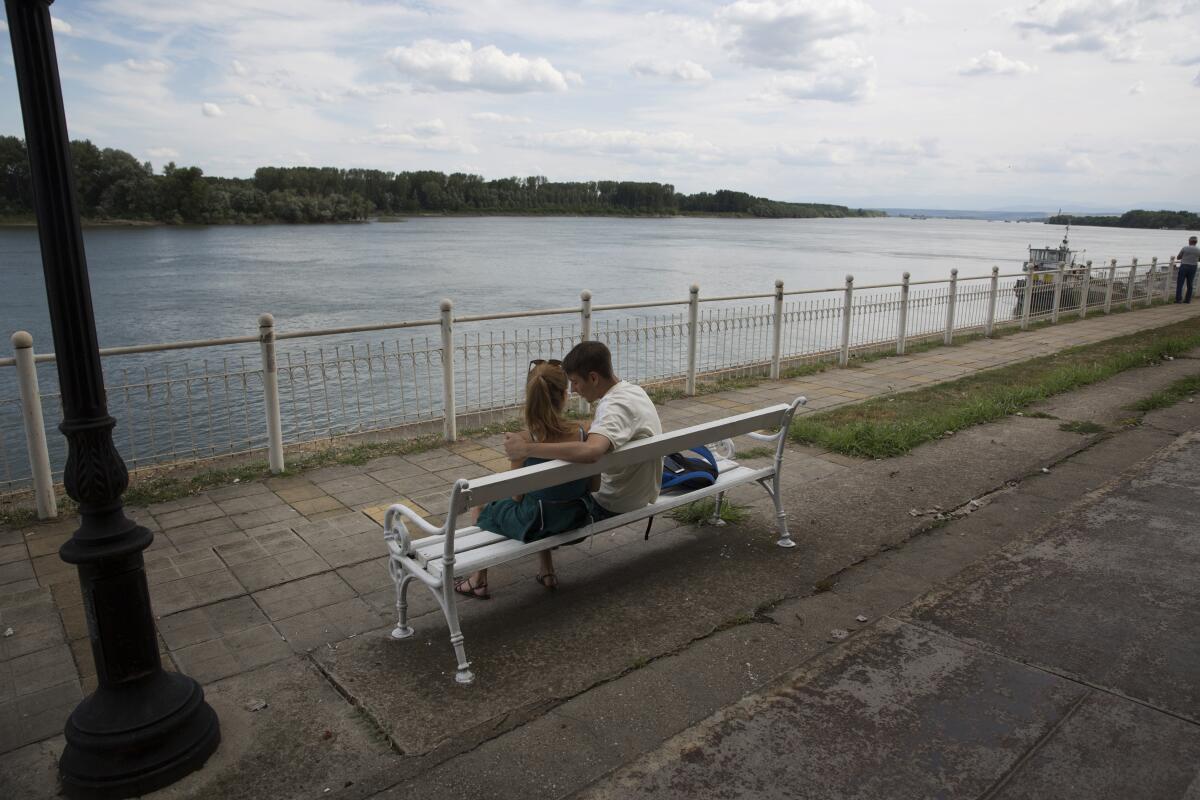
SKOMLYA, Bulgaria — Ivan Mladenov has watched life steadily drain out of the Bulgarian countryside.
In the 1960s, his village, Skomlya, was a small but bustling community of more than 200 people, well placed near a river, railway line and one of the region’s main roads in the foothills of northwest Bulgaria.
Today, its population has shrunk to about 20, with only about a dozen people living here full time during the hard winter months.
A graveyard silence blankets the village, which is slowly returning to nature. Mladenov — an energetic man with a full gray beard — says there are about 80 houses, but most are abandoned and overgrown with weeds.
“It’s lonely — there’s the TV and that’s it,” he says. “For entertainment, there’s a shop I can go to in the next village. Or I can start an argument with my neighbor.”
At 61, Mladenov says he’s the village’s youngest member, “besides the mayor.” The rest are well into their pension years.
As time progresses, somebody else dies and the village grows that much smaller. An electrical pole near the main road is dotted with notices of deaths and death anniversaries, attesting to this slow attrition.
“We’re falling apart,” Mladenov says. “There’s nobody here — nobody.”
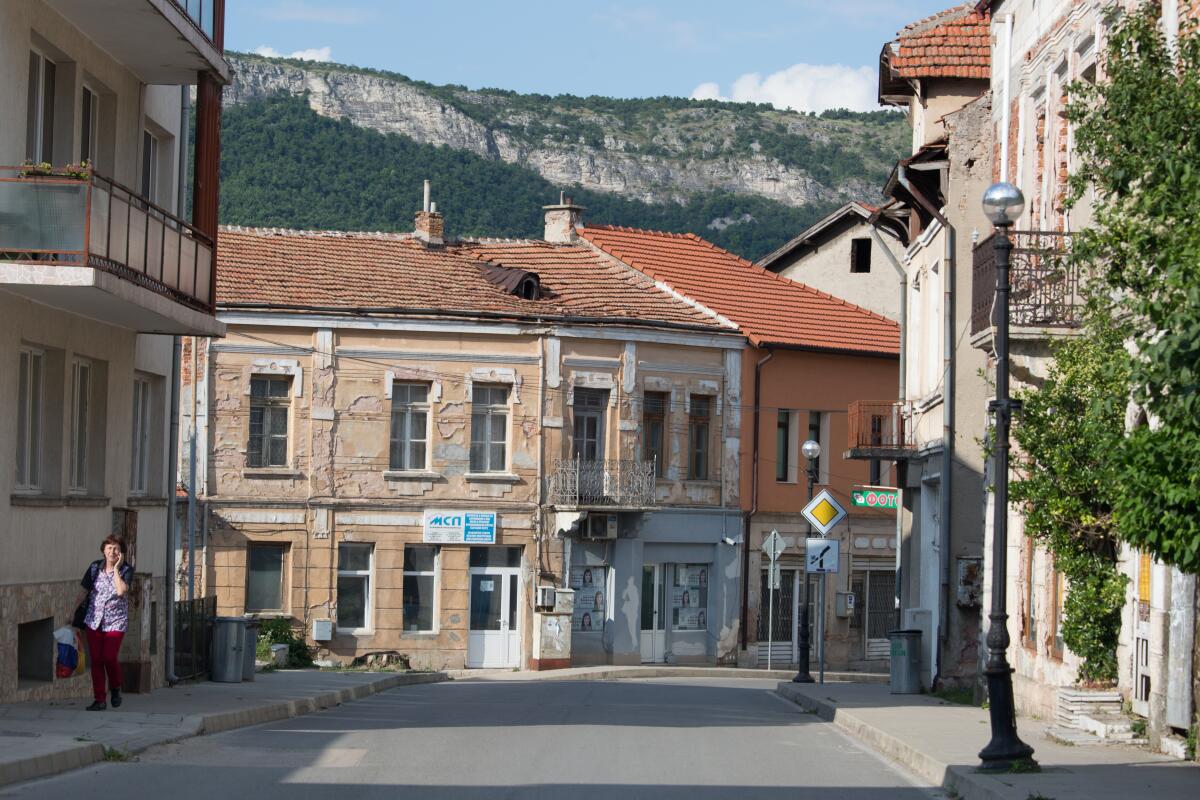
Bulgaria is shrinking.
Since communism’s end 30 years ago, the number of inhabitants has decreased by more than a fifth, from nearly 9 million to about 7 million. That is roughly equivalent to the percentage of loss seen in Syria over the last decade — the difference being that Syria was at war.
Large portions of the countryside have been hollowed out: The population is gone, but the buildings still stand.
According to the United Nations, if these trends continue, Bulgaria will contract further to about 5.4 million people by midcentury — a reduction of an additional 23%. Other estimates say it could go as low as 4 million, less than half its peak population.
And Bulgaria is just one of many places being transformed by huge demographic shifts. In North America, East Asia and elsewhere in Europe, birthrates are taking a nosedive. Last year in the U.S., the total number of births hit a 32-year low, and the average fertility rate dropped to 1.72 births per woman from 1.76 — the fourth straight year the rate has decreased.
At the same time, urbanization is enticing the young and ambitious out of the countryside. Rural communities everywhere are disappearing.
Of all the world’s regions that are depopulating, however, Eastern Europe has been hit hardest. Latvia, Moldova, Ukraine, Croatia, Lithuania, Romania, Serbia, Poland and Hungary regularly figure among the world’s nations experiencing the biggest losses.
Since the 1990s, the former communist bloc has seen its population plummet by 18 million, to 292 million — the world’s biggest case of depopulation not related to war.
The causes are the same throughout the region: low birth rates and out-migration. According to the U.N. World Population Report, women here on average have 1.66 children — well below the 2.1 needed to offset the deaths in the population. At the same time, masses of working-age people are leaving to look for jobs in Western Europe and beyond.
Perhaps not coincidentally, the region has also been seized by a wave of nationalist populism, as nativist movements such as Poland’s Law and Justice party and Hungary’s Fidesz party have swept to power on nationalist, anti-immigrant platforms. Elsewhere, Brexit, the election of President Trump and France’s “yellow vest” uprising all have roots in rural and suburban areas where there’s a sense that local communities are either being overwhelmed by newcomers — some, ironically, from Eastern Europe — or simply disappearing.
“There are studies [that show] in villages and regions where you have loss of population, even if it isn’t in Eastern Europe, you have growing fear of loss of cultural identity as a result of the influx of newcomers,” said Ruzha Smilova, program director at the Center for Liberal Strategies in Sofia, Bulgaria’s capital. She studies the relationship between population loss and nativist movements.
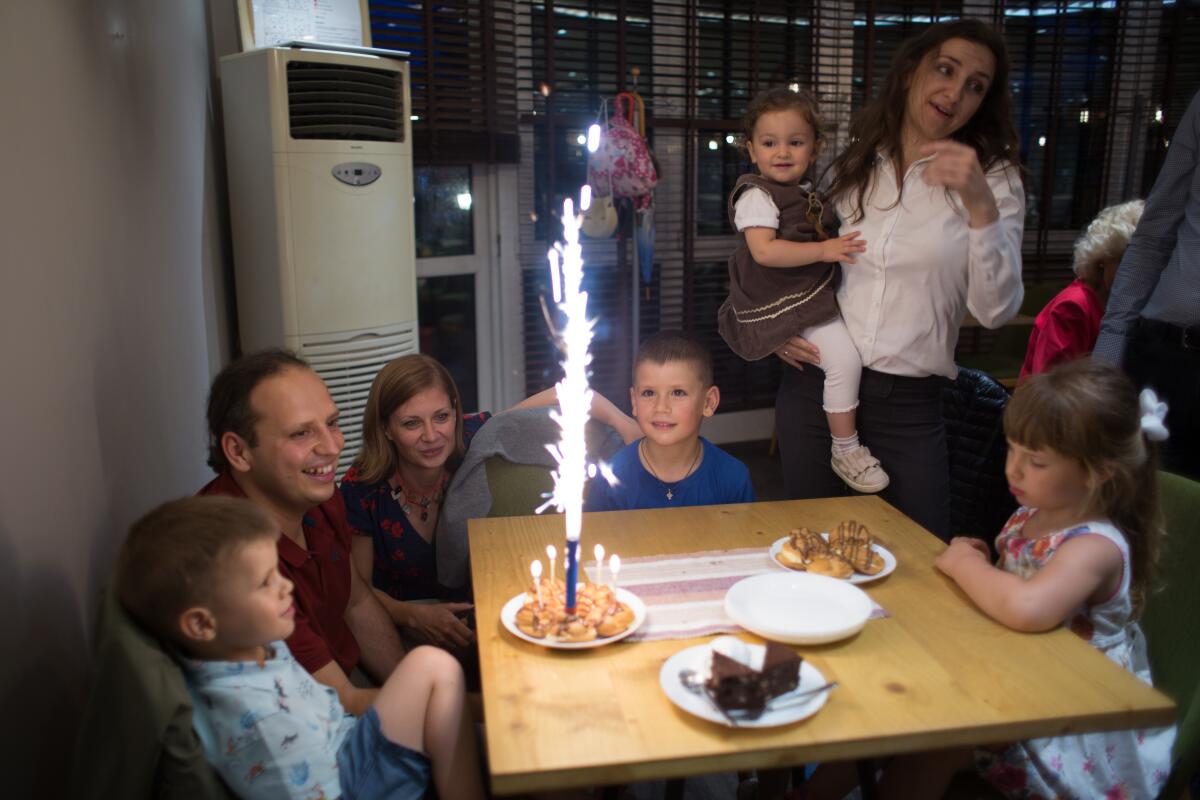
Bulgaria’s far-right parties are not as strong as those in other Eastern European countries. Collectively, they won 14% in the last national elections, and their numbers are dropping. Still, they are part of the government as a junior partner, and wield disproportionate influence on issues such as migration.
Angel Dzhambazki, a member of the European Parliament from Bulgaria’s far-right VMRO party, said his bloc opposes the admission of any refugees to Bulgaria. “[We will take in] not a single one,” he said. “It’s a slippery slope. If you take one, sooner or later you will be forced [by the European Union] to take the others. And there will be no explanation why.”
Of course, what Bulgaria needs more than anything is people. As its population contracts, its experience may provide some lessons to other disappearing populations of what lies in store.
Those who are emigrating are typically young and educated, a brain drain that could dampen Bulgaria’s ability to further develop its economy.
“What this means is that we are running out of people to work,” says Adrian Nikolov, an expert at the Institute for Market Economics in Sofia. “You might find a good place for a factory, but finding skilled workers for it is very hard.”
Prime Minister Boyko Borisov’s center-right government has overseen an economic boom in recent years. But corruption is still rampant, and schools and healthcare are substandard.
Tsvetelina and Svilen Hristov are part of the brain drain: Last summer, they relocated to France with their two sons for Svilen’s work as a technical advisor for Lufthansa.
They insisted their move is temporary, for better career prospects. But they also said their decision was driven by a frustration with the status quo and concern for their children’s futures.
“Bulgaria lacks values right now. I know that the EU is in crisis right now, but I really believe in [EU] values,” Tsvetelina said. “There’s corruption on all kinds of levels [in Bulgaria].”
If young, educated professionals like the Hristovs — who participated in anti-corruption protests and voted for reformist parties — are leaving the country, the prospects of enacting real change becomes that much harder.
Moreover, those leaving are largely in their baby-producing years. As a result, Bulgaria’s population, as is the case throughout the industrialized world, is growing older.
This puts a strain on the country’s finances. An older populace requires support such as healthcare and pensions. But with fewer workers, there is less tax revenue to pay for such services.
And, according to economists, population loss generally leads to weaker economic growth over the long run, since there are fewer workers to produce things, and fewer people to buy the products.
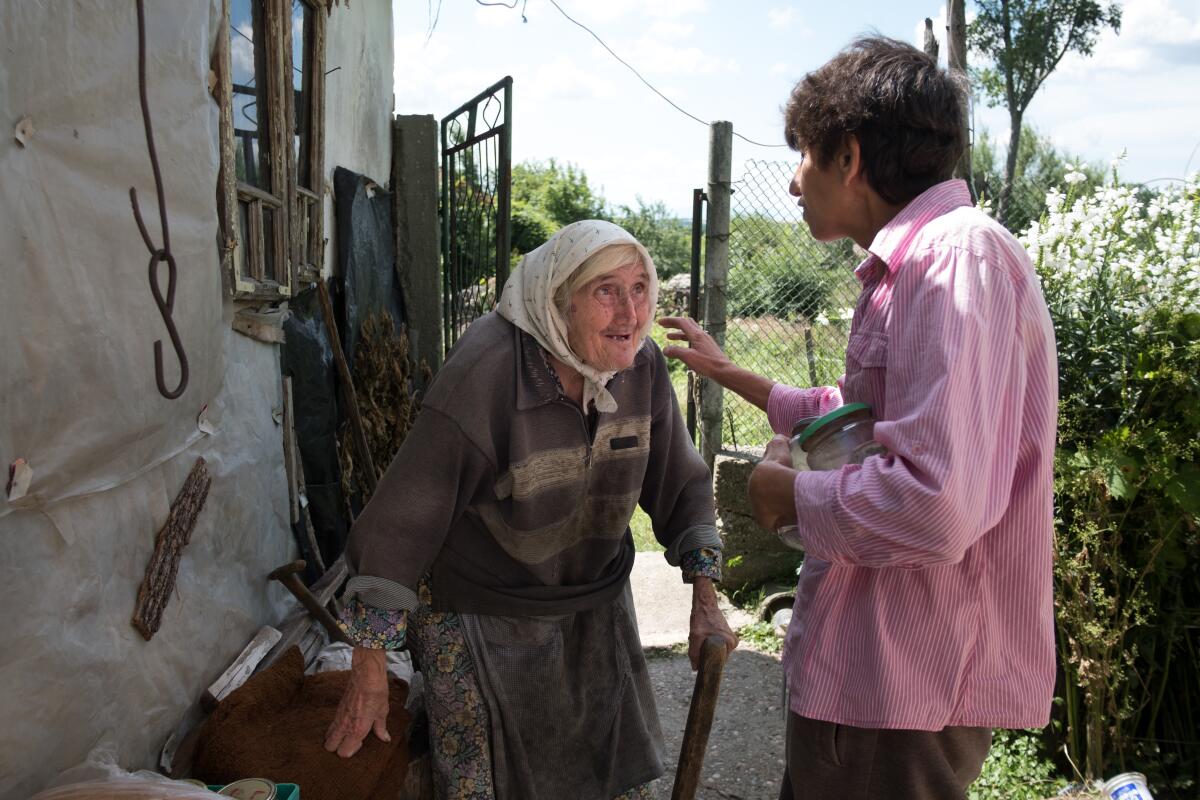
Even with these challenges, Bulgaria counts itself a success story.
When communism ended three decades ago, factories closed, hundreds of thousands left to look for work elsewhere and those who remained had fewer children, or none at all.
Today, Bulgaria is part of the European Union, albeit its poorest member. Investments have poured in from abroad and the economy is growing robustly. Unemployment is at historic lows and wages have risen, since those who have remained in the country are more in demand.
Thanks to this, thousands of Bulgarians are returning, somewhat lessening the population losses. Foreign businesses are setting up shop in a few areas that were once given up for dead. An IT sector is booming.
Still, the country continues to hemorrhage people. Bulgaria’s National Statistics Institute said the population shrank by about 50,000 in 2018 — a loss of 137 people every day — following similar drops in previous years. About 1 million Bulgarians live outside the country.
All this means that Bulgaria’s future is very hard to predict.
“Generally, I’m pretty optimistic on our development, because population is just a number,” Nikolov says. But he adds that in order for the country to thrive it needs to improve its health system and continue its switch to automation, which will replace lost workers.
Others, however, believe the demographic changes will place heavy strains on the country’s economy and social fabric in the decades to come.
“It will not be a smooth ride,” said Georgi Angelov, senior economist at the Open Society Institute in Sofia. “Even if we are twice as rich as now, the demographics will continue to decline.”
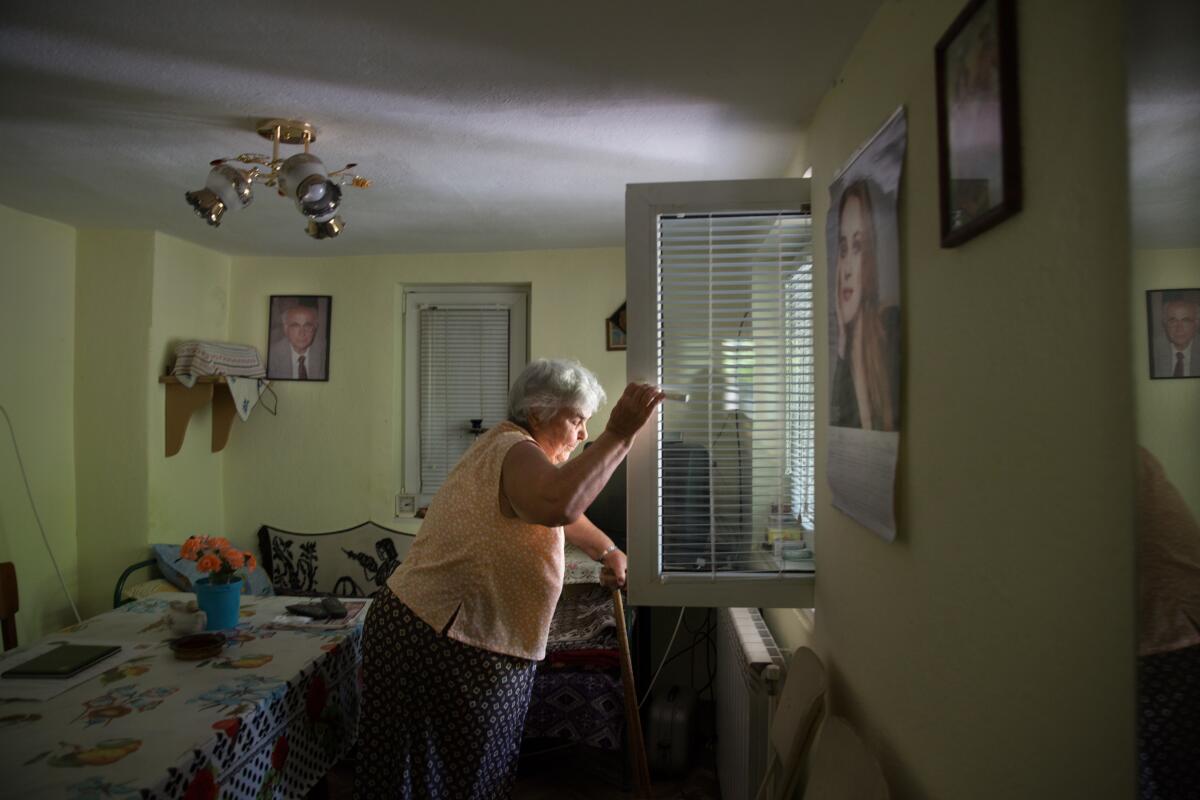
Much of this turbulence could come from the implosion of Bulgaria’s rural communities.
While some young people are leaving for jobs outside Bulgaria, a large number are simply abandoning the villages for larger towns and cities inside the country.
The National Statistics Institute says almost 1,200 villages, like Skomlya, have a population of fewer than 50 people. Many settlements are just a few years away until the last light is extinguished. Whole swaths of the country are beginning to resemble the ghostly area around the former Chernobyl nuclear plant in Ukraine — abandoned and frozen in time.
The left-behinds are the elderly and infirm; the government struggles to provide for them.
Regional hospitals are closing because local populations are too small to support them. Many of the old live in relative isolation, with occasional food deliveries and their kitchen gardens to support them.
Yana Rupeva, 43, tries to fill in the gaps.
She runs the Northwest Project Foundation, a nonprofit organization that, among other services, arranges a free cardiovascular clinic for pensioners once a month in her hometown of Lyutibrod.
Once, Lyutibrod was home to more than 1,300 souls. Today, officially, 290 people live there, though Rupeva says the number is closer to 250 and continues to drop.
“There’s a natural process taking place, especially in winter,” she says outside the clinic, which has been set up in the basement of a run-down municipal building. “You hear the church bell tolling a lot.”
On a recent summer day, 21 people signed up to visit a specialist. Among them were Ivana Alexandrova, 80, who hobbled to the clinic with the assistance of two canes. Two nights before, she said, she lost feeling in her arms and legs. Another, Stoyan Stoyanov, 68, needed his pacemaker checked.
Both received treatment they needed and went home satisfied. But overall, Rupeva says the mood among the elderly and those few younger people still left in the villages is one of quiet fury.
“Their whole attitude is that they’ve been abandoned by the world and no one cares about them,” she says. “This is reflected in every element of their life— from their health to the way they communicate with each other.”
In addition to the clinic, Rupeva opened a soup kitchen in November for the poorest pensioners. Fittingly, it’s located in the town’s shuttered kindergarten.
Stern and Dimitrov are special correspondents.
More to Read
Sign up for Essential California
The most important California stories and recommendations in your inbox every morning.
You may occasionally receive promotional content from the Los Angeles Times.
